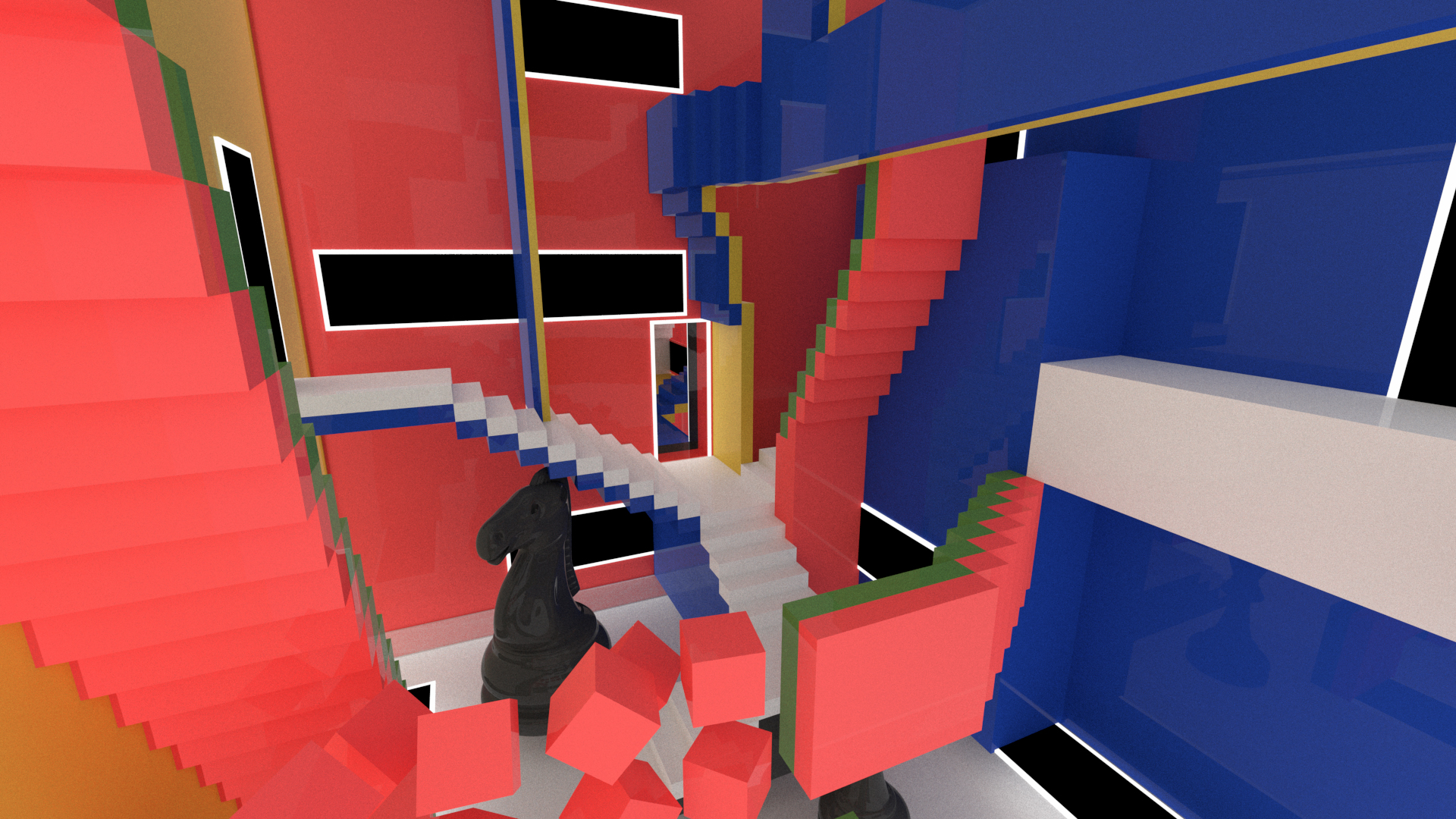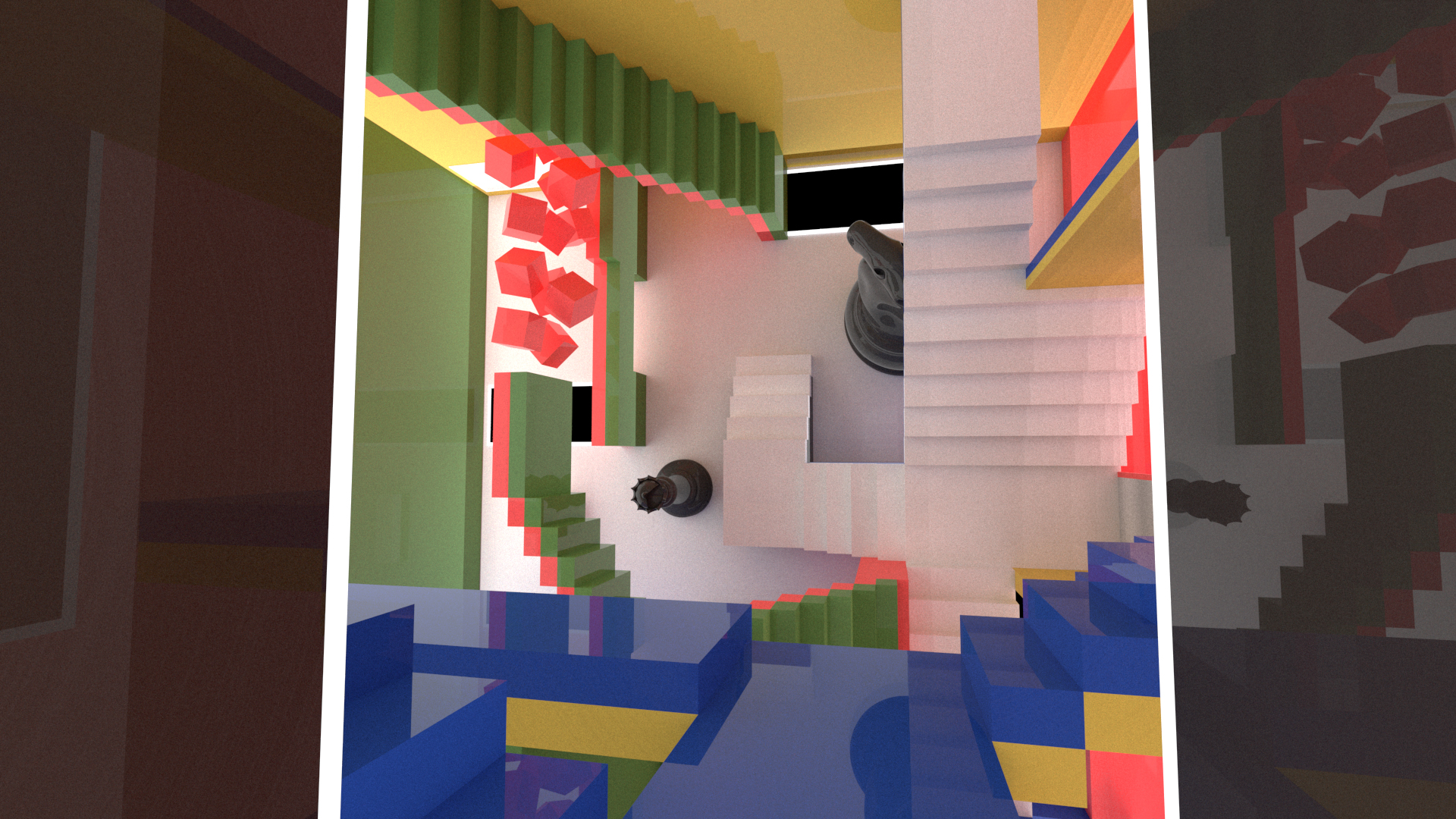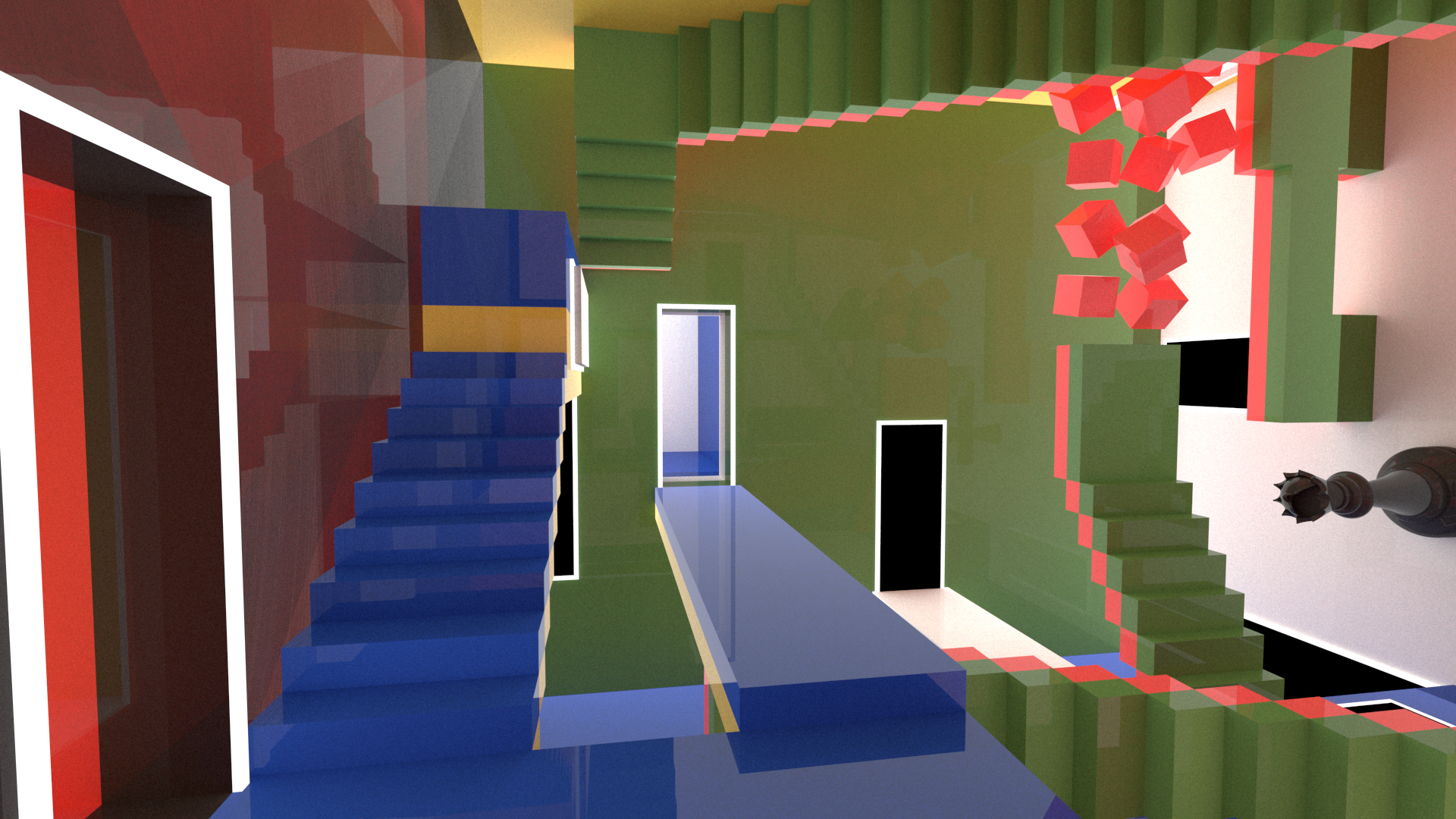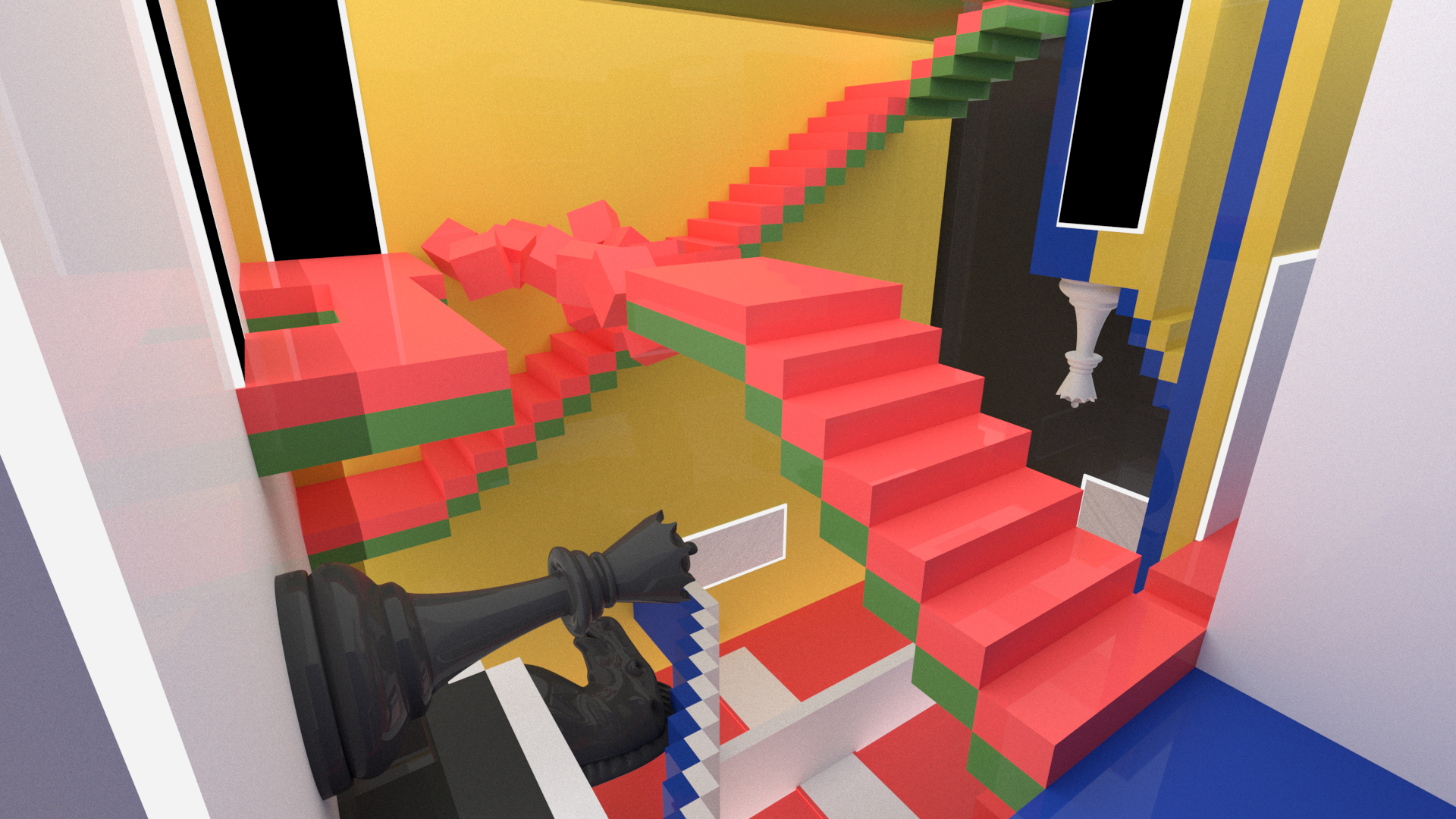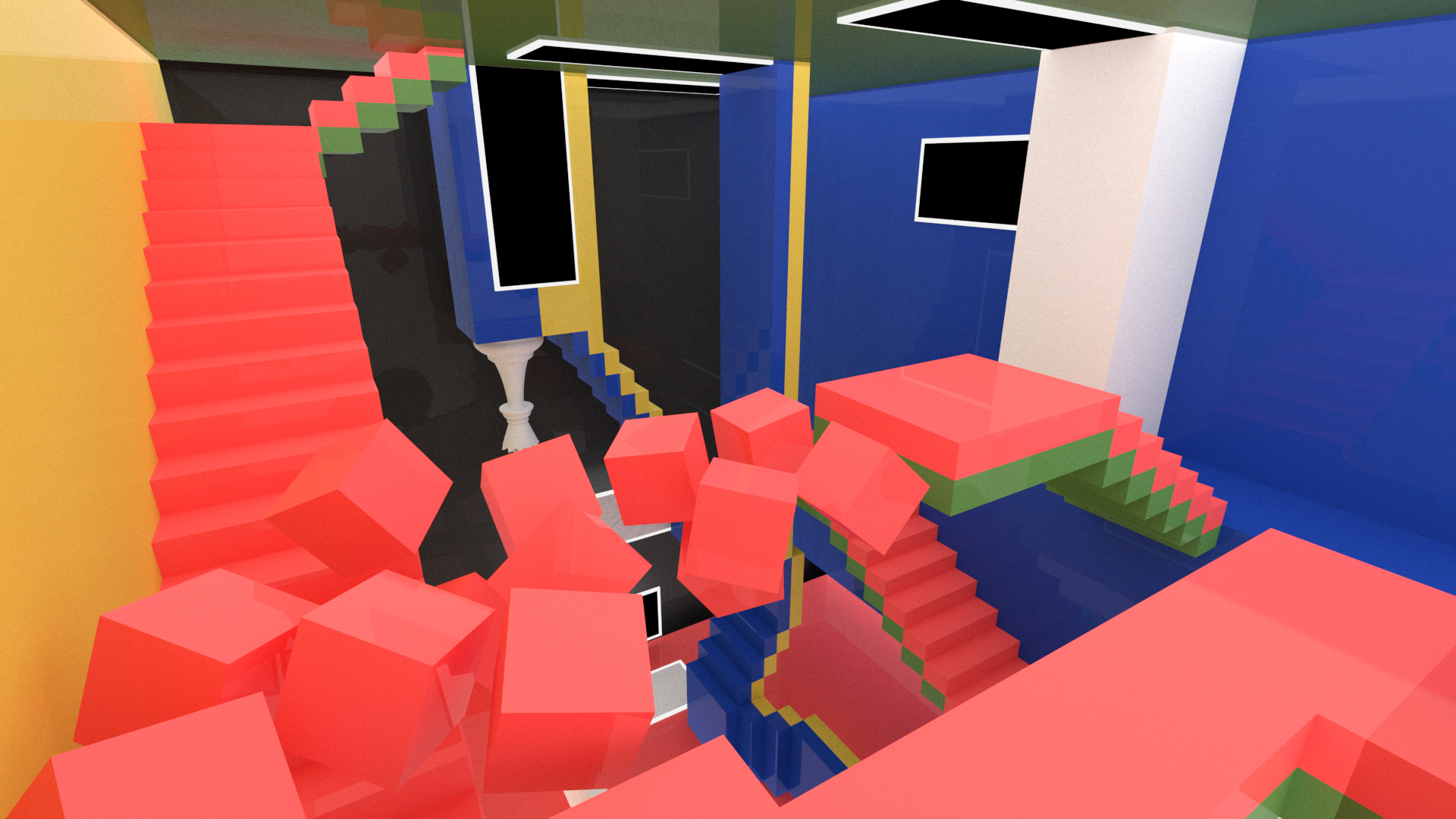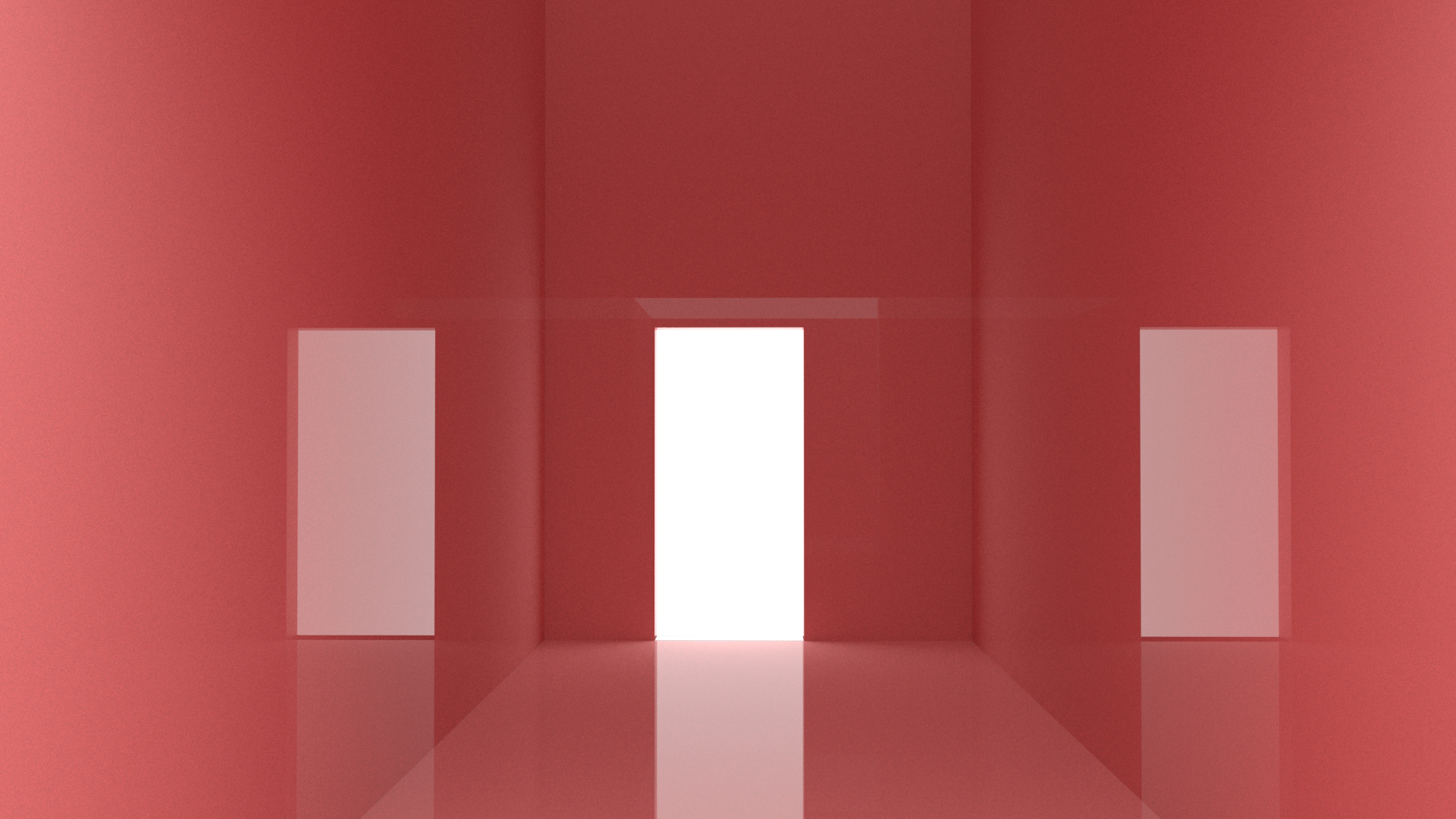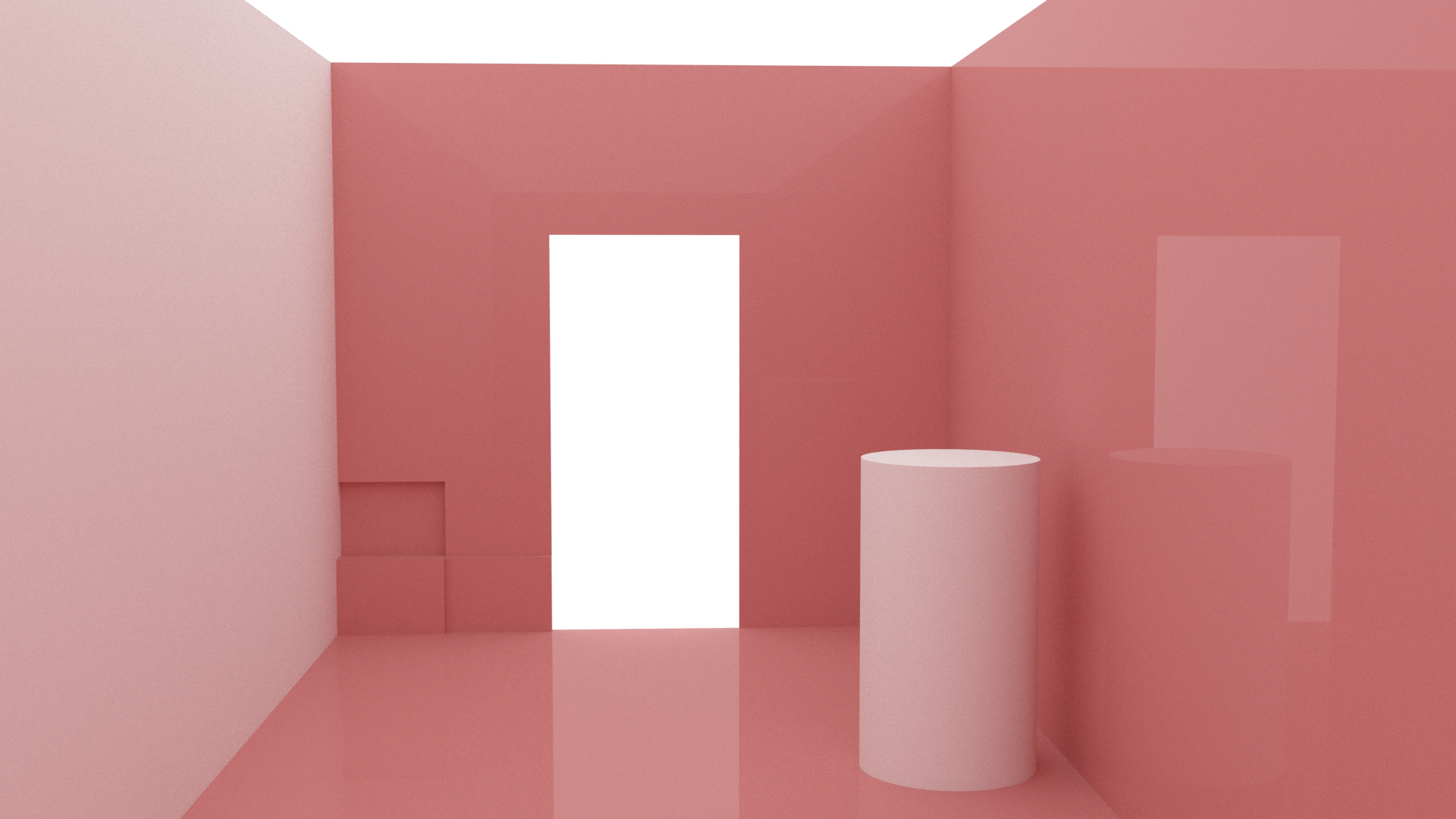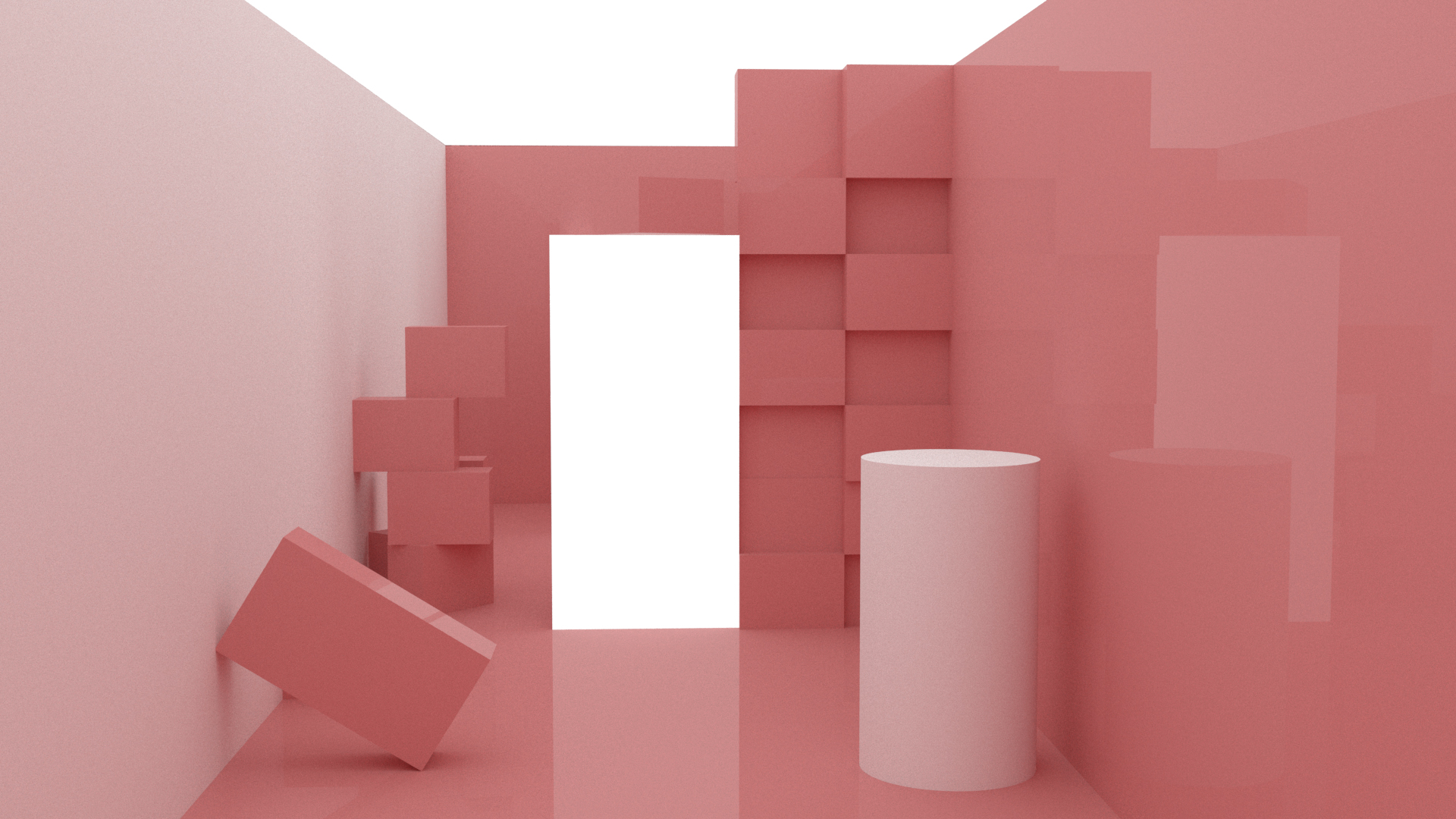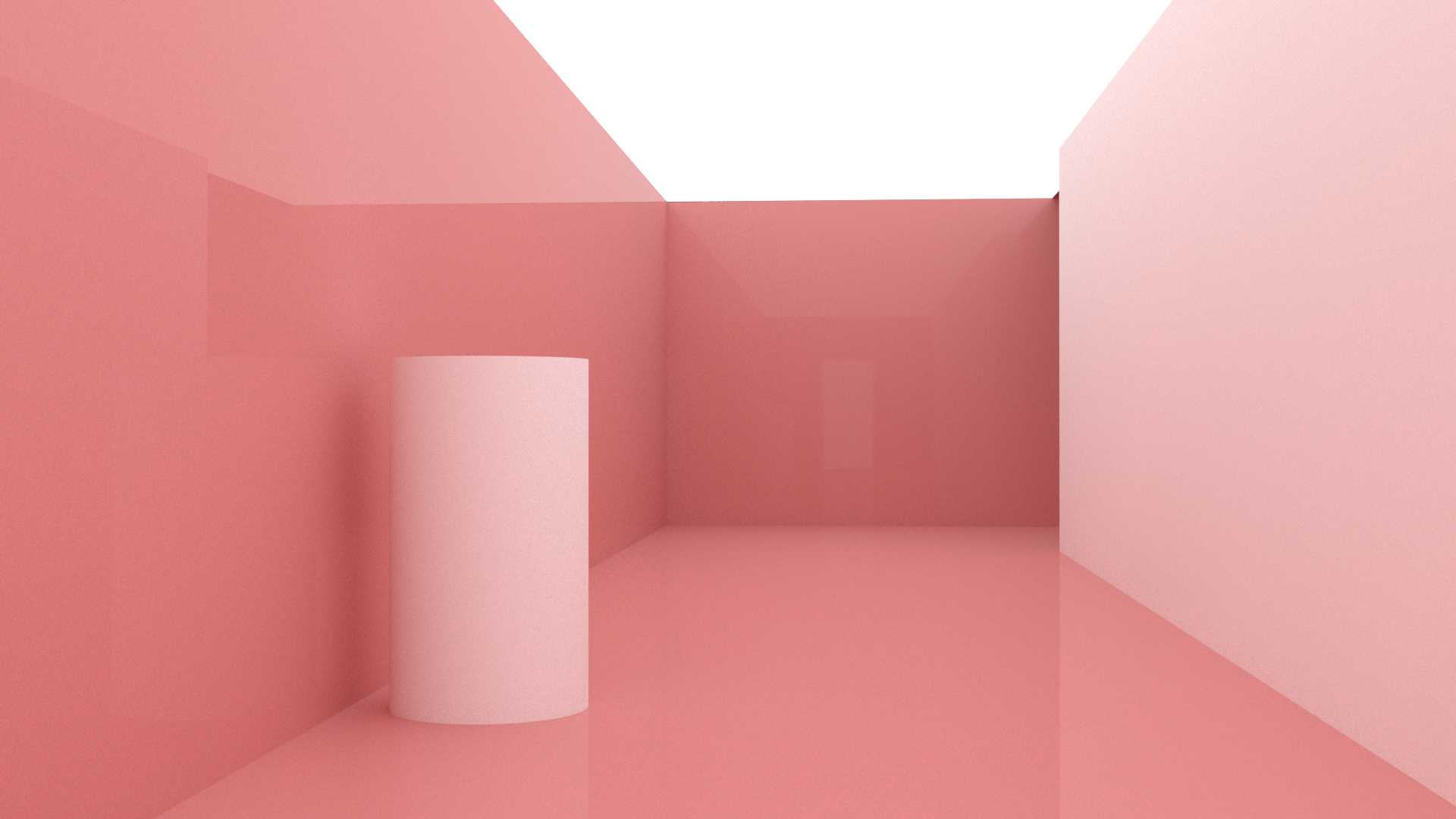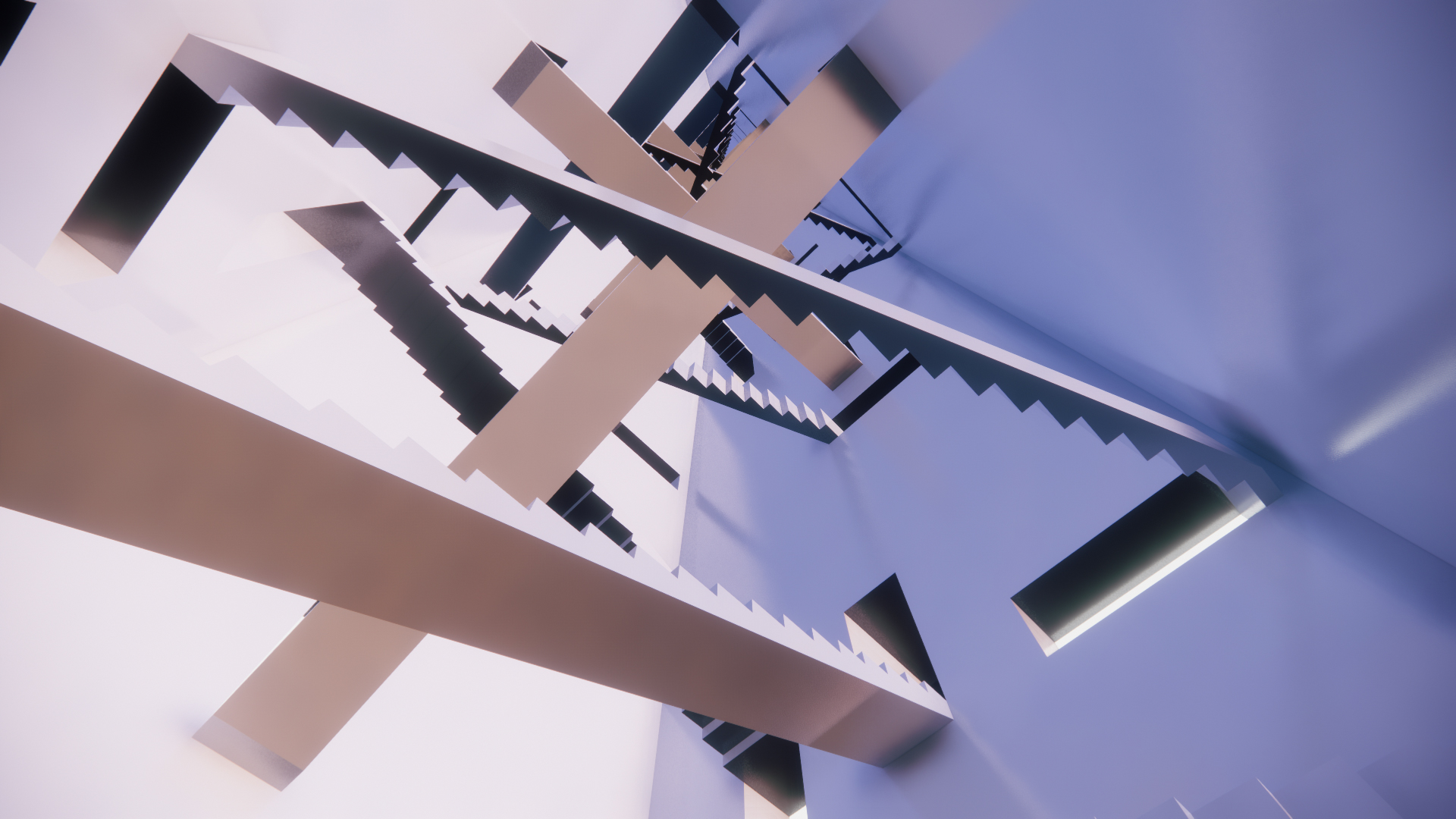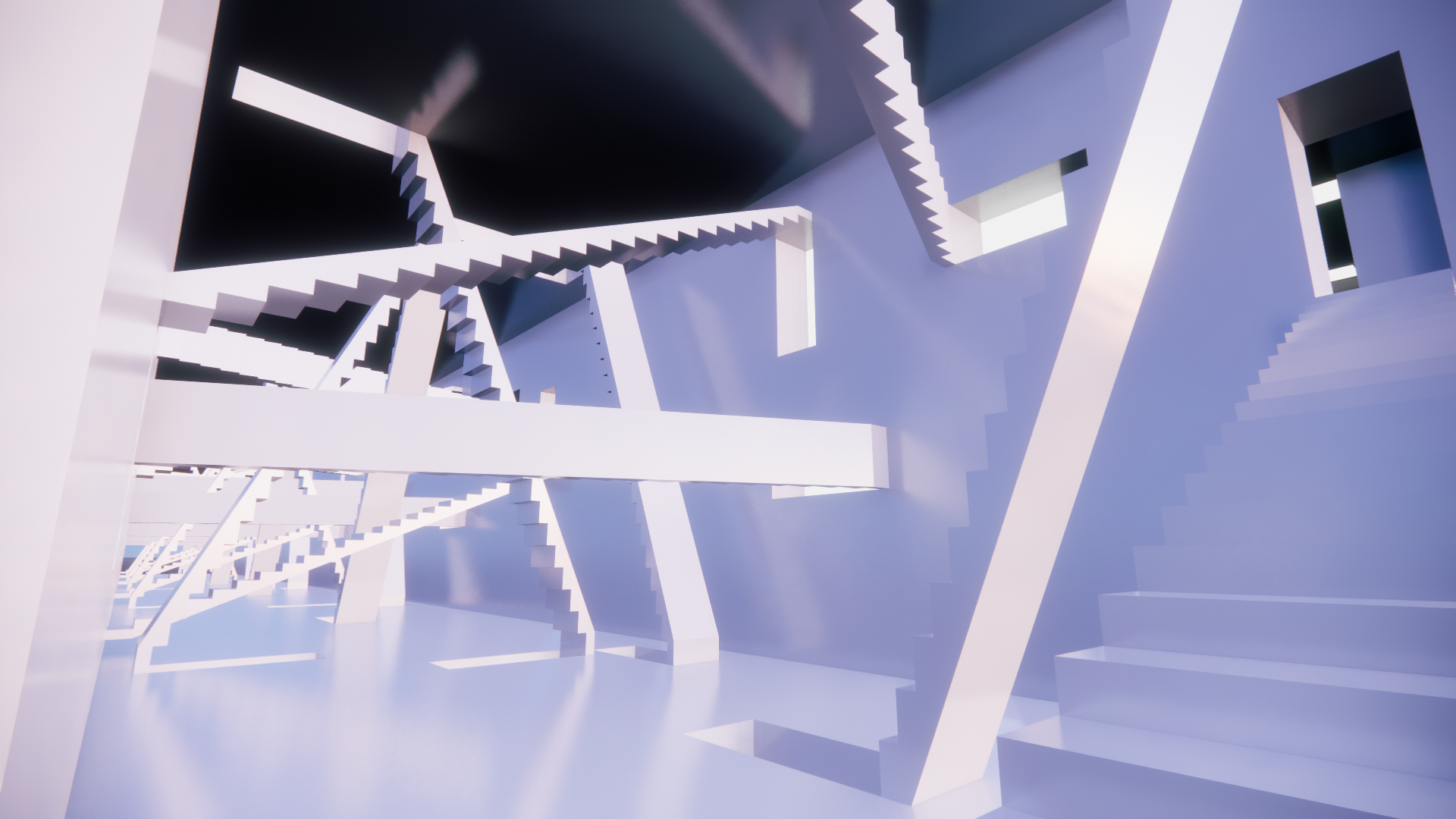INFINITE
VIRTUAL REALITY: IMAGINING FANTASY AND ILLUSION
This game attempts to create an immersive dreamland for players to feel a sense of illusion, either through visuals or by changing their perception of the space. The game is about escaping the fantasy that the lighthouse keeper breaks into the space of a new dimension and the rule, in reality, does not work anymore here. The player is trapped in this new dimension, in a dream, in a fantasy, in an illusion. Thus, the player needs to escape this infinite space of illusions, otherwise, you will be trapped in this illusion space forever.
To create the illusion, the game focused on optical illusion and the change of gravity. The main mechanics is that player can use the portal to achieve the change of gravity so that he can walk on different planes and escape this 3D maze. The use of a portal can achieve a seamless transition between different spaces. There is one main maze room where it has lots of portals connecting some small puzzles.
In terms of architecture, this game tries to construct a dreamland that does not exist in the reality to use all possibilities of Virtual Reality. Thus, I looked into Escher’s work of how he created the illusion space that the room is distorted and multi-gravity. It plays with gravity and explores how the change of gravity will affect our brain about the perception of space. By that, there is no definition or relationship between the wall and floor anymore. By the change of gravity, players can walk on the wall or even on the ceiling. Though it is impossible to achieve in reality, it can be easily built in the virtual environment. By using the VR, the player can obtain an immersive experience in those space that does not exist in reality. Likewise, this game enables the player to perceive the space when the object or room is on an abnormal scale. For instance, when the ceiling height is infinite, it will completely change the perception of the space.

AAVS MELBOURNE
New Paper III // 2021
UNIT 3
Architecture As Level Design: The Lighthouse
TUTORS: Allison Crank &
Raphael Penasa for TygerTyger
STUDENT
Ziliang Huang
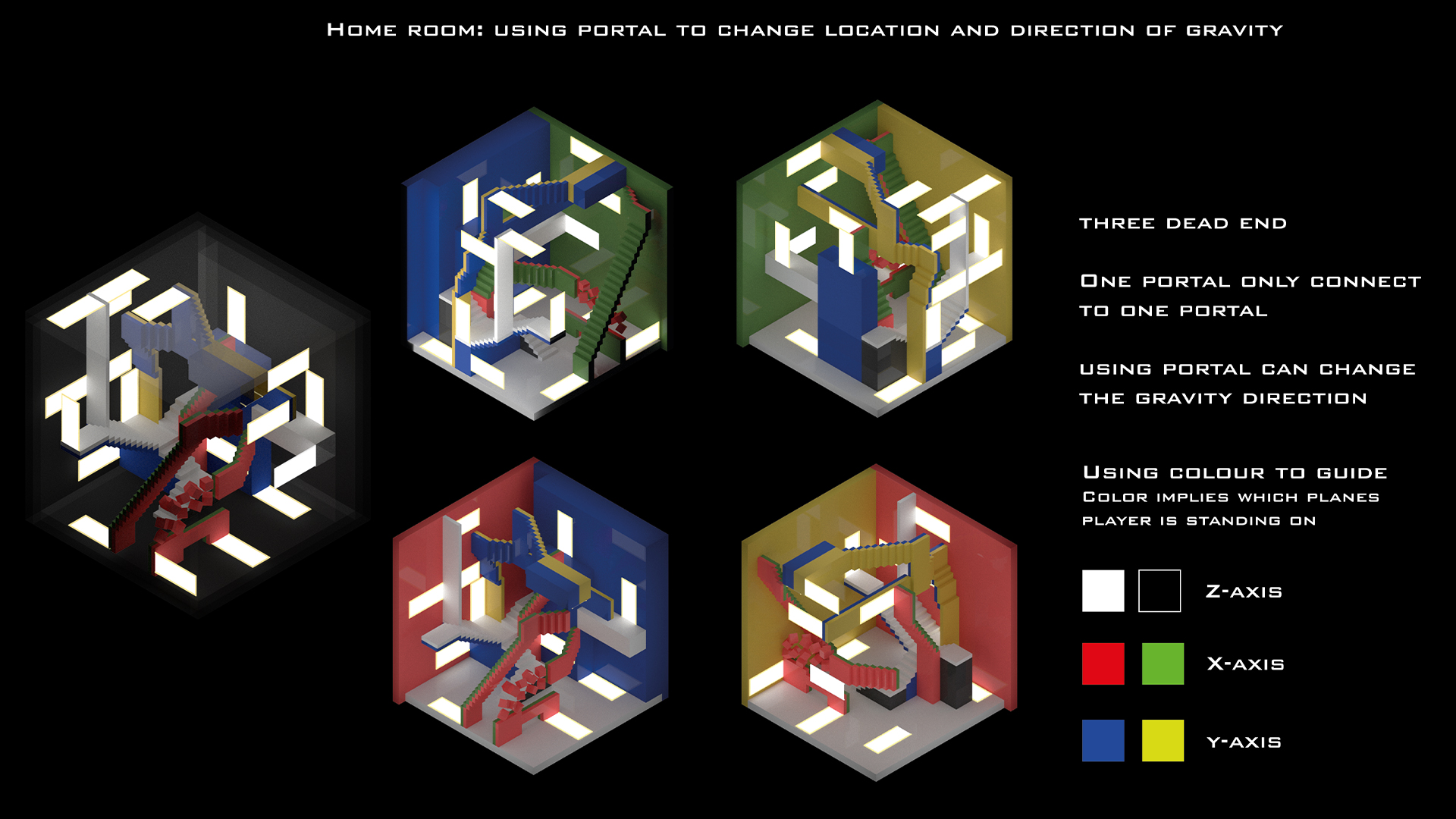
Therefore, I construct the main room as the 3D maze which there is no definition of ceiling, wall, and floor anymore. The mechanics are using the portal where players can transfer from one portal to another portal, while it will also change the direction of the gravity. I tried to make some rules that one portal only connect to one portal and I intended to introduce the colour in pairs that represent the direction of gravity and players will know which plane/direction of gravity they are on, such as black and white, red and green, and blue and yellow. Though the portal system seems very complex, I intended to make it linear. If a player can find the correct portal, the player only needs to follow the route. Also, the music is essential in this game that it will inform players which direction of gravity they are in through playing different music.
Furthermore, this game tries to use strong contrast to create some abstract space. For example, when there is only black and white in the space, it will start to confuse the player’s brain and the brain will no longer have the ability to define the space. Therefore, the player is just walking by following their intuition and that’s what the game wants the player to experience in some scenes. Furthermore, in some scenes, there is a strong contrast between the light and darkness, such as the beginning in the lighthouse. This intends to make the player engaged in a specific object, for instance, the door with light invites people to enter.
The game tends to create some infinite scene to make the player feel disorientated and trapped in the endless loop. Thus, this game invites the player to break the rule to find solutions for the puzzles and escape some of the “infinite” room. It creates an endless loop of this hallway, and players will realize they are in an endless loop when they see the same scene appeared again and again. The solution is simply to look back at the entrance, and the player will find the wall is composed of black and if the player draws one block using their hand, then the whole wall will collapse and the player can escape the room.
This game is more about walking and experiencing the space of illusion. Therefore, in terms of locomotion, the player will need to use their whole body to walk. To be specific, they need to swing their arm to walk in the game, not only to enhance the immersive experience but also to reduce the motion sickness.
Context
THE LIGHTHOUSE
When the keeper struggles to reach the ground of the lighthouse, the barrier just keeps emerging. The stairs suddenly plunged into the darkness and you can no longer move forward because of the big gap between the stairs. However, there is a door just beside you that seems distorted and invite you to enter the space. When entering the door, you feel like you enter a space that is in a completely different dimension. Is it still in real life? Or in fantasy, dream? Everything is not making sense anymore, the space is flipped, distorted. There is no perception of reality anymore. You are trapped in the fantasy and YOU realize that you need to escape this space, otherwise, you will be trapped in this fantasy forever.
The lighthouse keeper is trapped in a different dimension, in a dream, in a fantasy, in an illusion. And as a player, you need to escape the space of illusions before you are trapped in this illusion space forever.
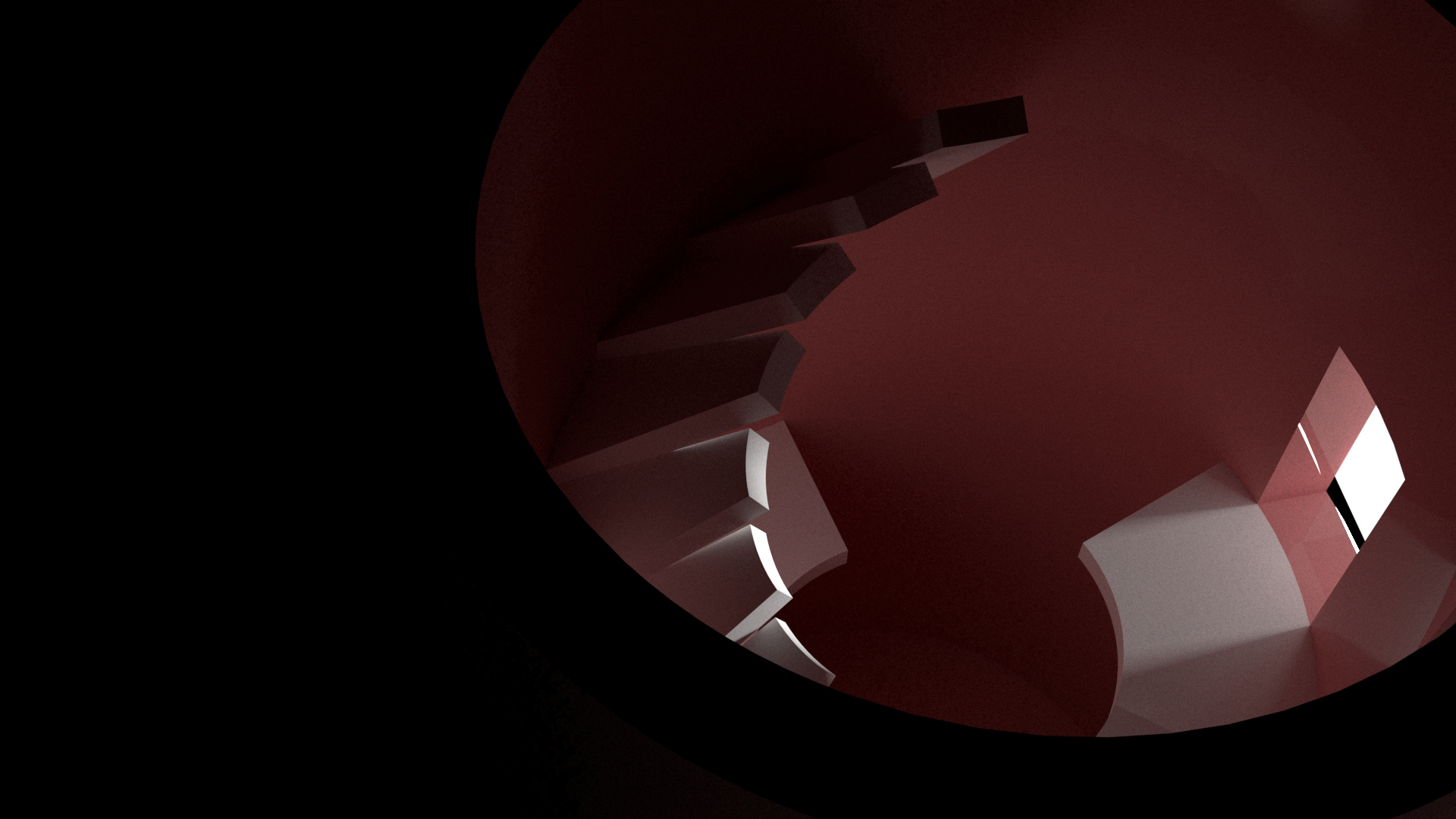
THE PLAYER IS TRAPPED IN THIS NEW DIMENSION, IN A DREAM, IN A FANTASY, IN AN ILLUSION.
User Journey
CIRCULATION IN VIRTUAL SPACE
Though this game intends to create a sense of illusion and disorientation for the player to make them feel they are trapped in the infinite, the game process is linear so that the player will not get completely lost and gradually lose their interest.
Lighthouse: It all starts in the lighthouse, where the environment is completely dark and there are only two doors shining which tends to attract the player to enter those spaces.
Infinite hallway: Then the player enters the infinite hallway which is in pure black and white, it will start to confuse the player’s brain and the brain will no longer have the ability to define the space. Therefore, the player is just walking by following their intuition.
Infinite homeroom: The player will fall into the homeroom which has a large number of portals connecting other spaces. When the player enters the portal, it will change the direction of gravity so that they can walk on different planes. The colour will represent the direction of the gravity to create some guidance for the player to solve the maze.
Infinite room: The game tends to create some infinite scene to make the player feel disorientated and trapped in the endless loop. Thus, this game invites the player to break the rule to find solutions for the puzzles and escape some of the “infinite” room. It creates an endless loop of this hallway, and players will realize they are in an endless loop when they see the same scene appeared again and again. The solution is simply to look back at the entrance, and the player will find the wall is composed of black and if the player draws one block using their hand, then the whole wall will collapse and the player can escape the room.
Infinite Stairwell: In terms of the infinite stairwell, I create this room as the transitional space where I intended to create an environment to convey a sense of disorientation in space and direction. Actually, there is no puzzle here, the route is set where the player only has to walk and perceive the space, which this transitional space gives the player some space to breathe.
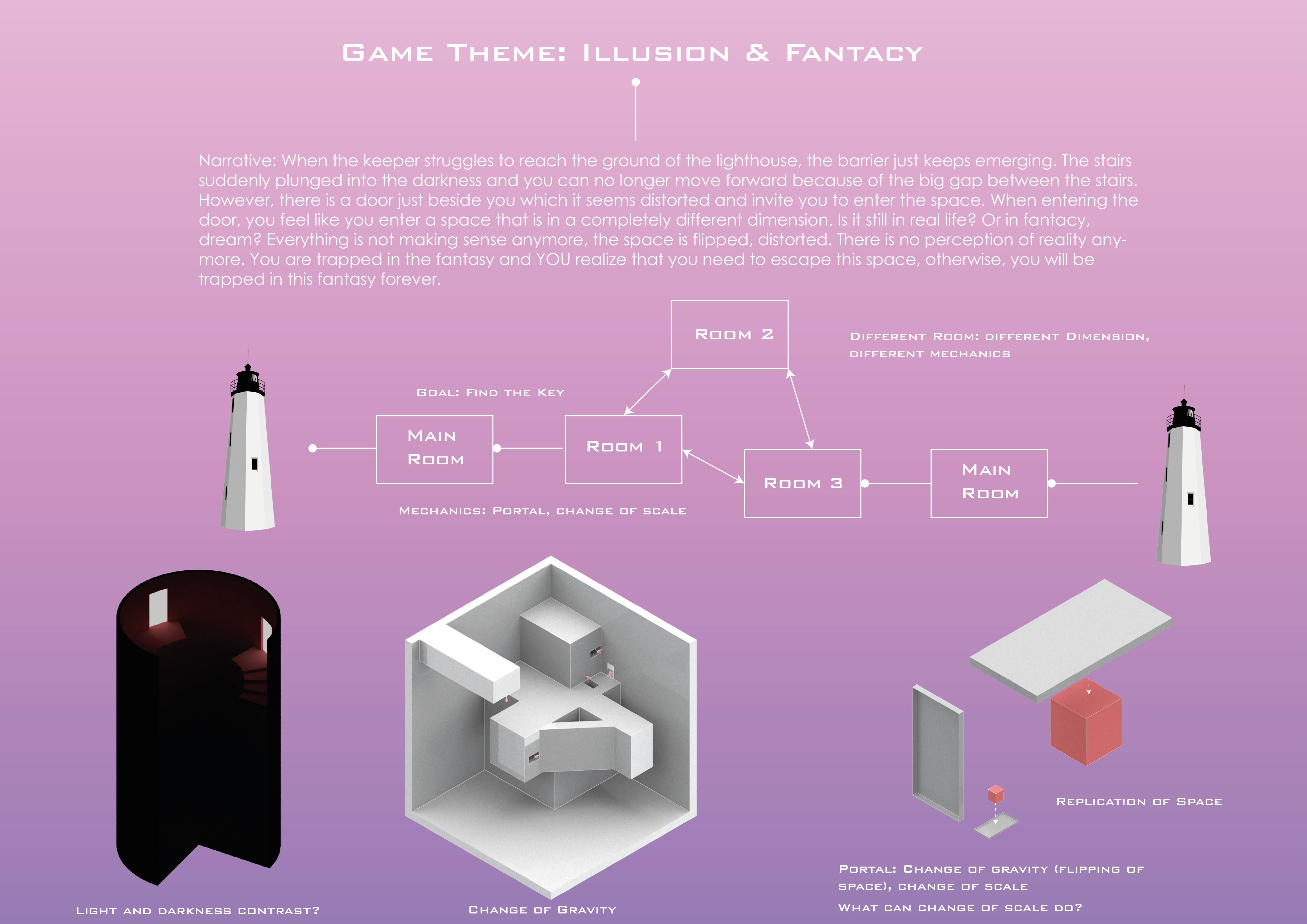
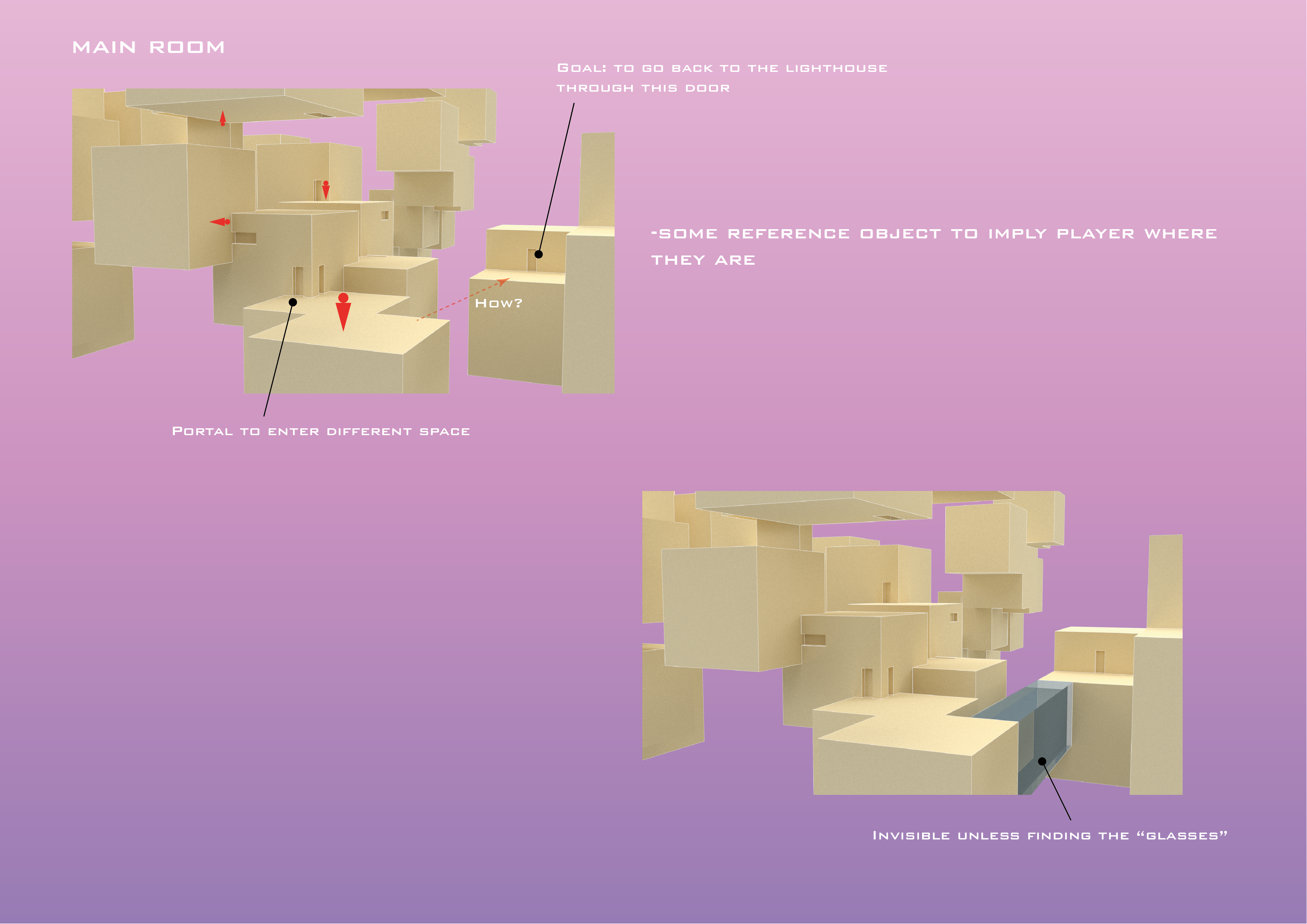
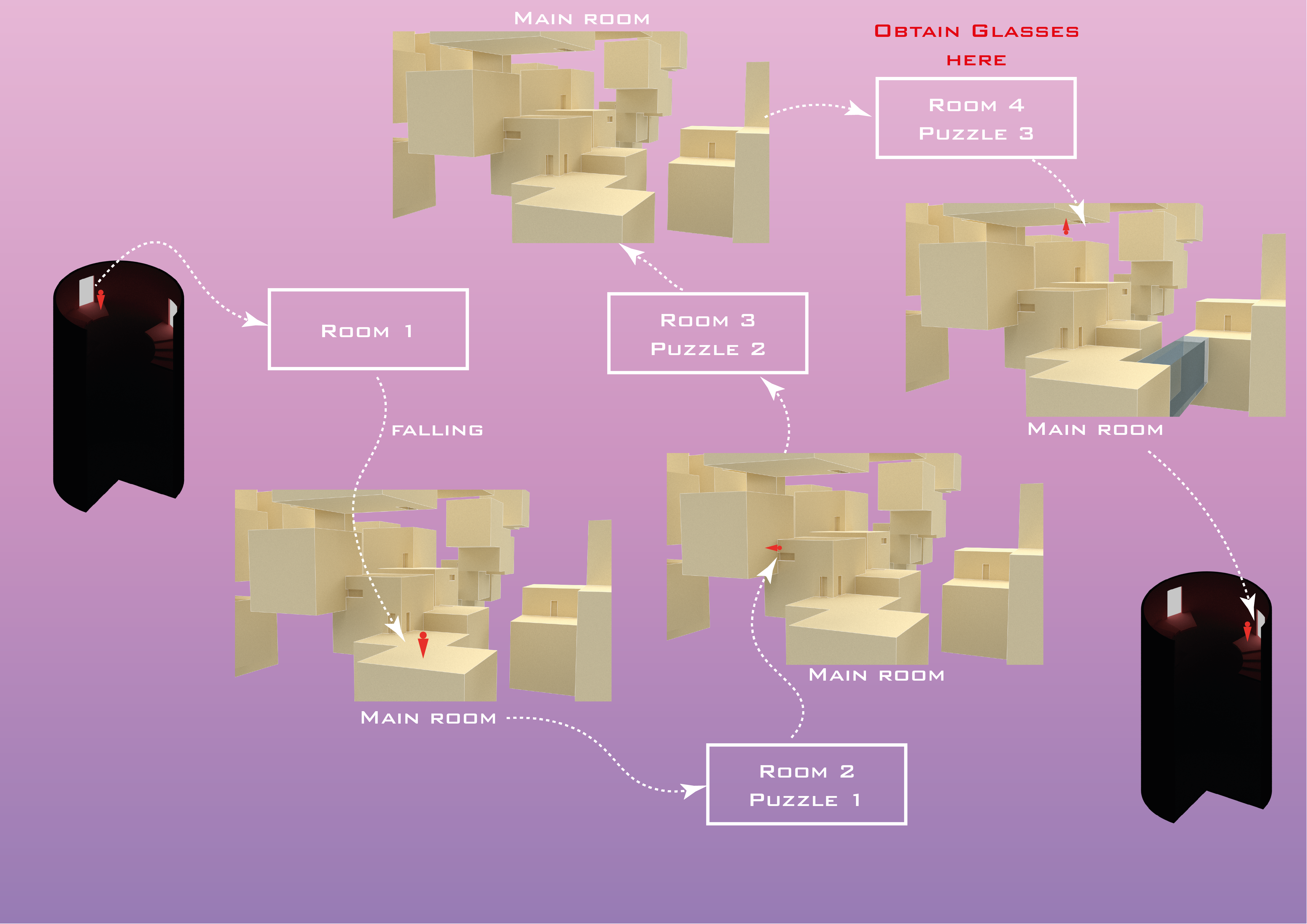
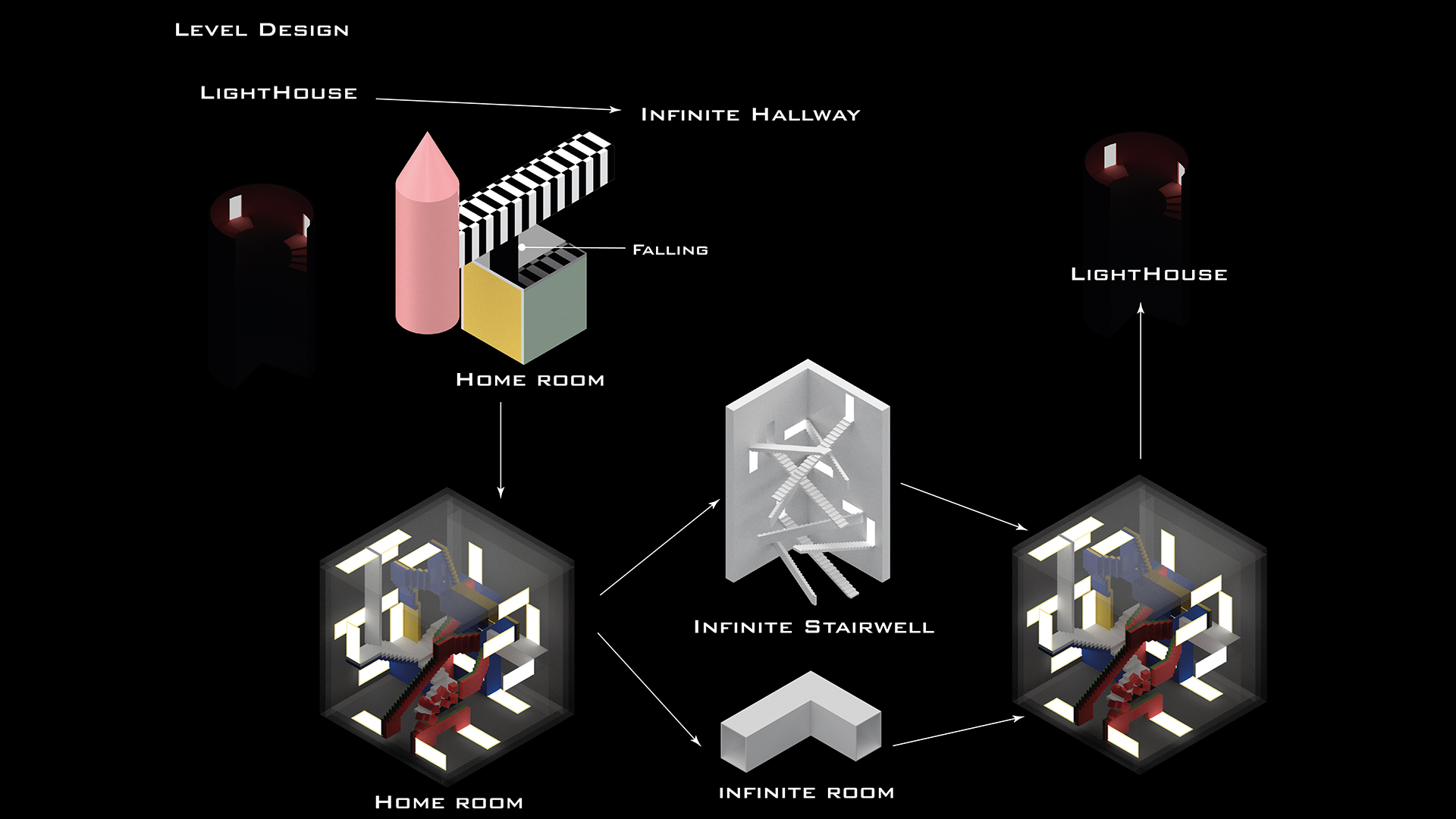
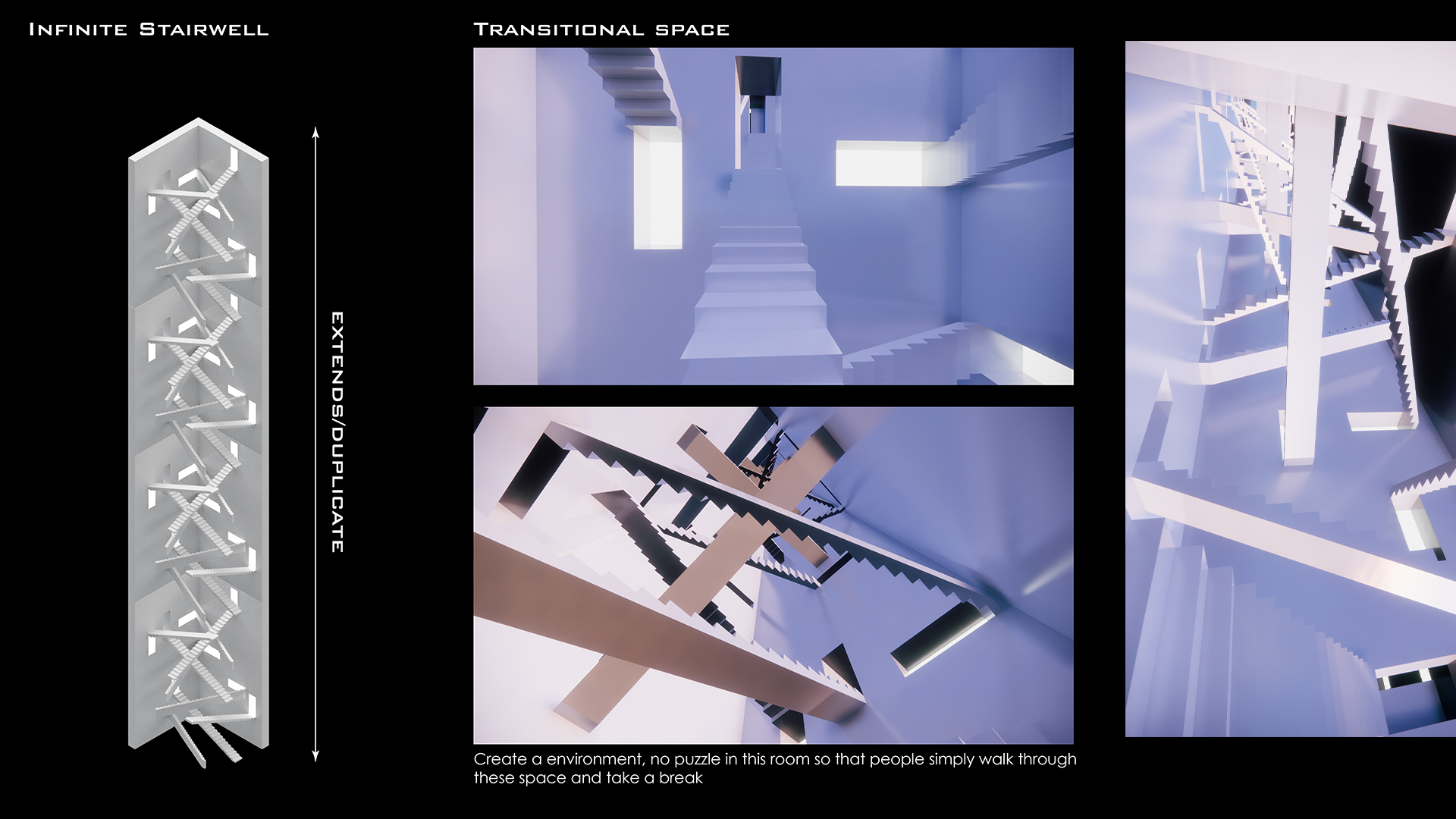
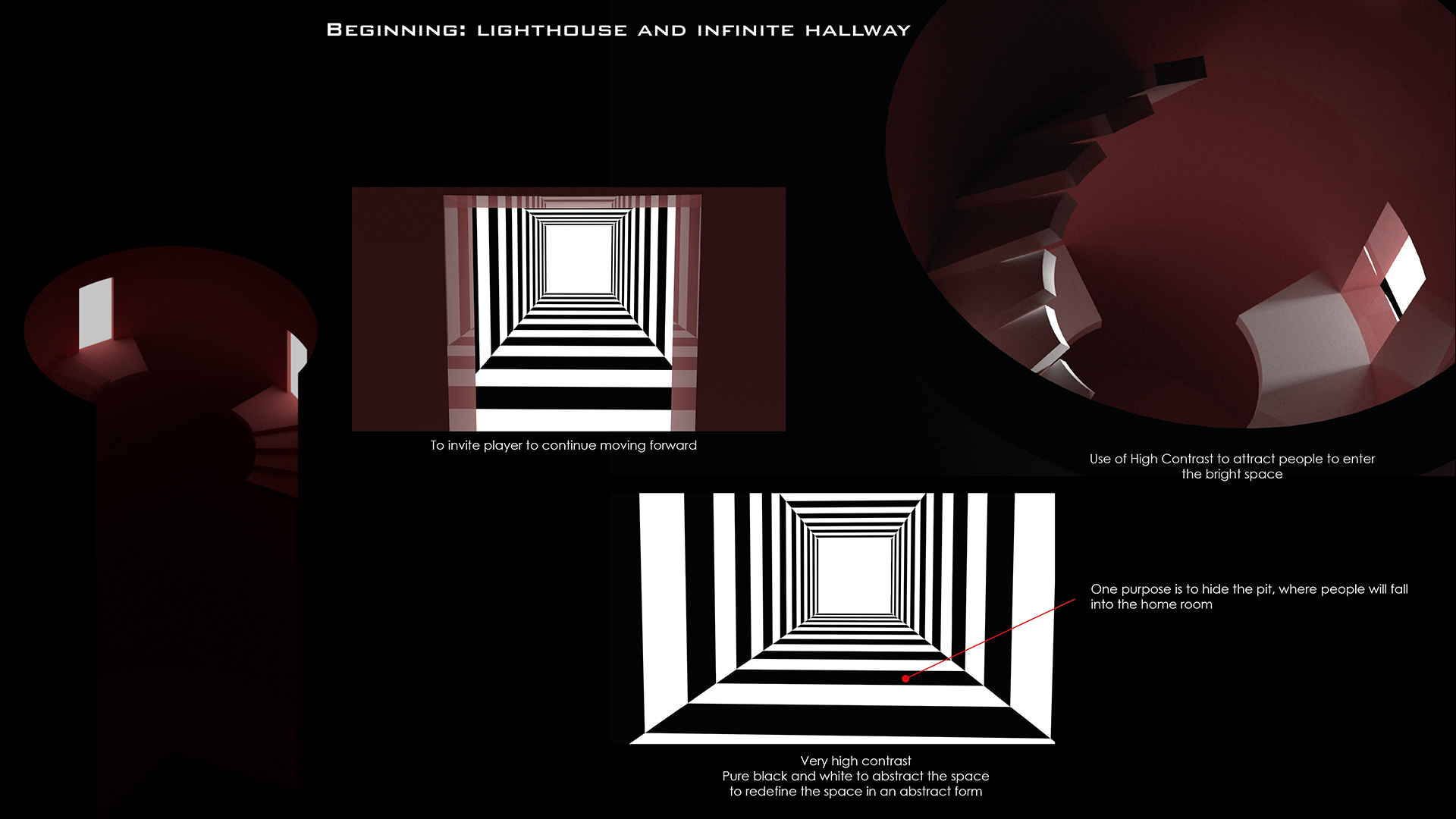

Core Values
CONNECTING STUDENTS ACROSS COURSES
The core of this game is to create a sense of illusion and disorientation, to make the player feel an immersive experience of being in the infinite dreamland. The illusion is achieved either through their eyes or by changing their perception about the space such as the gravity and scale. The game tends to use VR to visualize some space that is distorted or supernormal, which does not exist in reality.
Locomotion
SWING THE ARM TO MOVE
In terms of body movement, I wish to integrate the walking motion in the game because this game is mainly about walking and perceive in this 3D maze. But it is very hard to walk in 2x22 space, so I tried another approach that people can swing the arm to move, which is exactly the same as how people use their hands when they are running, and technically it will reduce the motion sickness brought by the continuous movement.
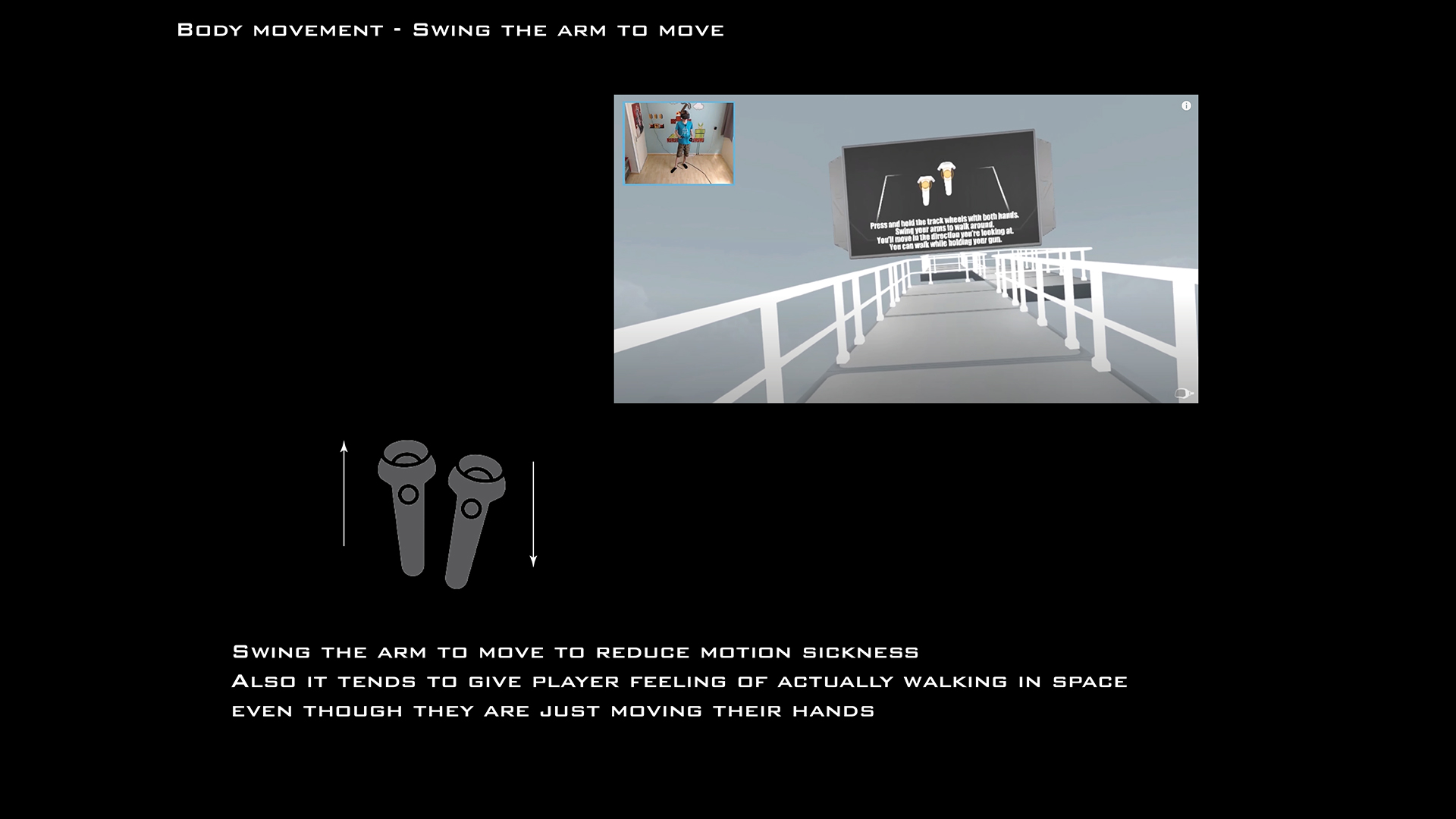
Portal
WALK ON THE WALL
The major mechanics for this game is the portal where it will allow the player to change the location in the room and it will also change the direction of the gravity so that the player can walk on the “wall.” Technically, to achieve this, it will need one extra camera that renders the other room’s scene at the same time to create this seamless transition.
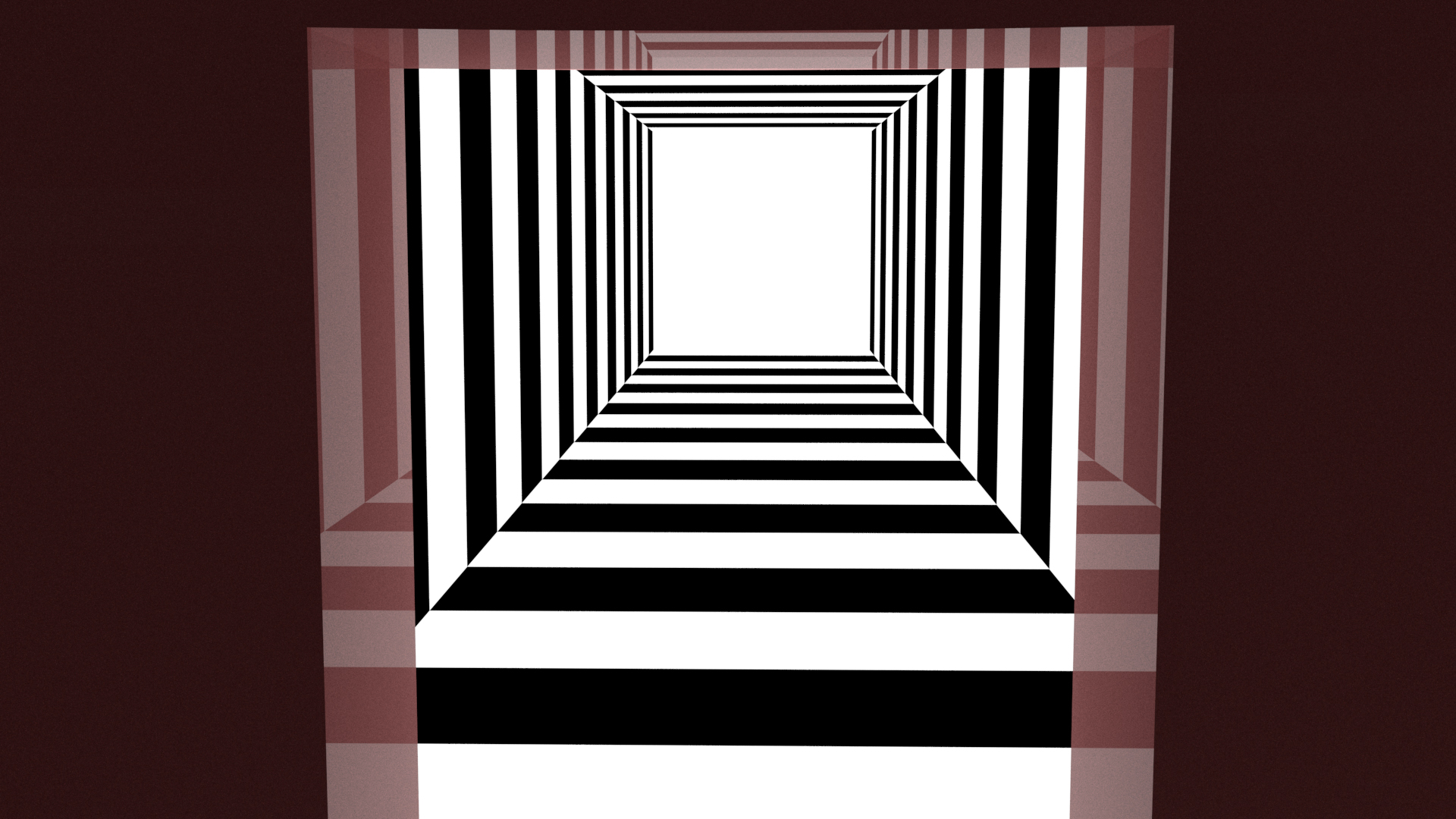
VIDEO: Screen capture of flythrough of the game
VIDEO: Screen capture moving in the game
Gallery
OUTCOMES
ARCHIVES
↖︎ Introduction
↖︎ Research
